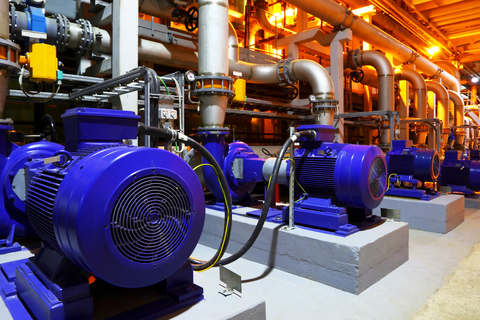
This brief article will focus on how decreases in the cost of connectivity are enabling facilities to connect to the IIoT. The challenge will be to leverage their data to optimize performance by monitoring equipment to prevent downtime.
The IIoT is upon us. The exponential decrease in the cost of connectivity and the rise of low-power computing have made it possible to connect every machine to the Internet—but is that a good thing?
The forecasted scale of connected sensors and the relative onslaught of data that goes along with them promises to overwhelm even the keenest data connoisseur. The key challenge of the IIoT is not the connectivity, it’s making sense of all the data.
The Three Flavors of Continuous
Continuous sampling enables a user to display a real-time view of a sensor’s reading. On the surface, this provides a lot of value—a facility can replace the manual process of logging the readings of temperature and pressure gauges. But viewing these seemingly random numbers out of the context of operational conditions doesn’t provide much value—they must be viewed in context. Is the temperature trending upwards, or was there a temporary spike? And what happens if the machine is getting hotter, but no one is there to notice it?
Continuous monitoring delivers a constant stream of data and alerts if something changes. The most basic implementation is a threshold-based trigger. Once the temperature hits a certain value, an alarm goes off. Yet again, this lacks context—was this jump in temperature expected? Did it happen every time the operating conditions changed? Many companies have started incorporating advanced anomaly detection algorithms, which rely on neural networks that learn the history of a streaming signal and can detect when the behavior is significantly different. While these algorithms are a step up from threshold-based triggers, they still do not provide the user with what he or she wants to know—why did the temperature go up?
Continuous diagnostics are like having a doctor sit beside your bed and constantly analyze your readings in real-time, all the time. This requires a generational leap in the algorithms as well as the data that’s being sampled and analyzed. By combining different types of sensors, like vibration, ultrasound, magnetic, and temperature, advanced algorithms can deliver an accurate diagnosis of what’s wrong with a machine and provide recommended steps for action.
In Predictive Maintenance, the Bar Keeps Getting Higher
The two most prevalent technologies of predictive maintenance (PdM) include vibration and ultrasound analysis. Both technologies have long relied on human experts with decades of experience and training to analyze raw data and diagnose the state of a machine. These manual processes are impossible to scale. How do you manually analyze a continuous stream of data from thousands of machines?
Hiring an army of highly-trained engineers is obviously not the solution here. The answer arrives with combining cloud computing and connected devices on the edge. Instead of keeping all that available data internal to your organization for analysis by on-site technicians, data should be automatically sent to the cloud for processing and analysis. The problem previously has been that this data was next to impossible to gather, but with advances in both network connectivity and sensor technology, we no longer need to rely on the manual gathering of data.
Thus, using algorithms in place of technicians to continuously diagnose every recording, as it arrives in real-time, is the only sustainable future. Algorithms can not only detect that something has changed but also provide actionable insights and recommended next steps. This removes the lag time inherent in manual processing and enables managers to make better, more informed decisions, and operators to become more efficient by creating the time to focus on the data that really matters.
The Need for Continuous Diagnostics
With affordable sensors, mobile devices on the edge and cloud computing, modern IIoT solutions can connect equipment through data and analysis that constantly listen and learn. Continuous diagnostics at scale in real-time is finally a viable reality. Powered by ever-growing data sets collected from different types of machines, current solutions can now be trained to identify the first sign of a malfunction and provide users with actionable insights and next-step recommendations to repair or replace the equipment.

The prohibitive training and upfront investments of the past are no longer necessary, making PdM accessible in every facility. By pairing internet-age and mobile technologies with pay-as-you-go pricing models, cloud-based continuous diagnostics can finally help facilities run their machines in a more efficient, reliable manner with less impact on the environment.
About the author
Saar Yoskovitz is the CEO and Co-Founder of Augury. He has extensive experience in machine learning, signal processing algorithms and system architecture. Prior to founding Augury, Saar worked as an analog architect at Intel. Saar holds a Bachelor of Science in electrical engineering and a Bachelor of Science in physics from the Israel Institute of Technology (Technion). During his studies, Saar initiated a voluntary project called “Select - Students for Technological Advancement,” for which he received the Israel's Council of Higher Education (MALAG) award for social involvement.